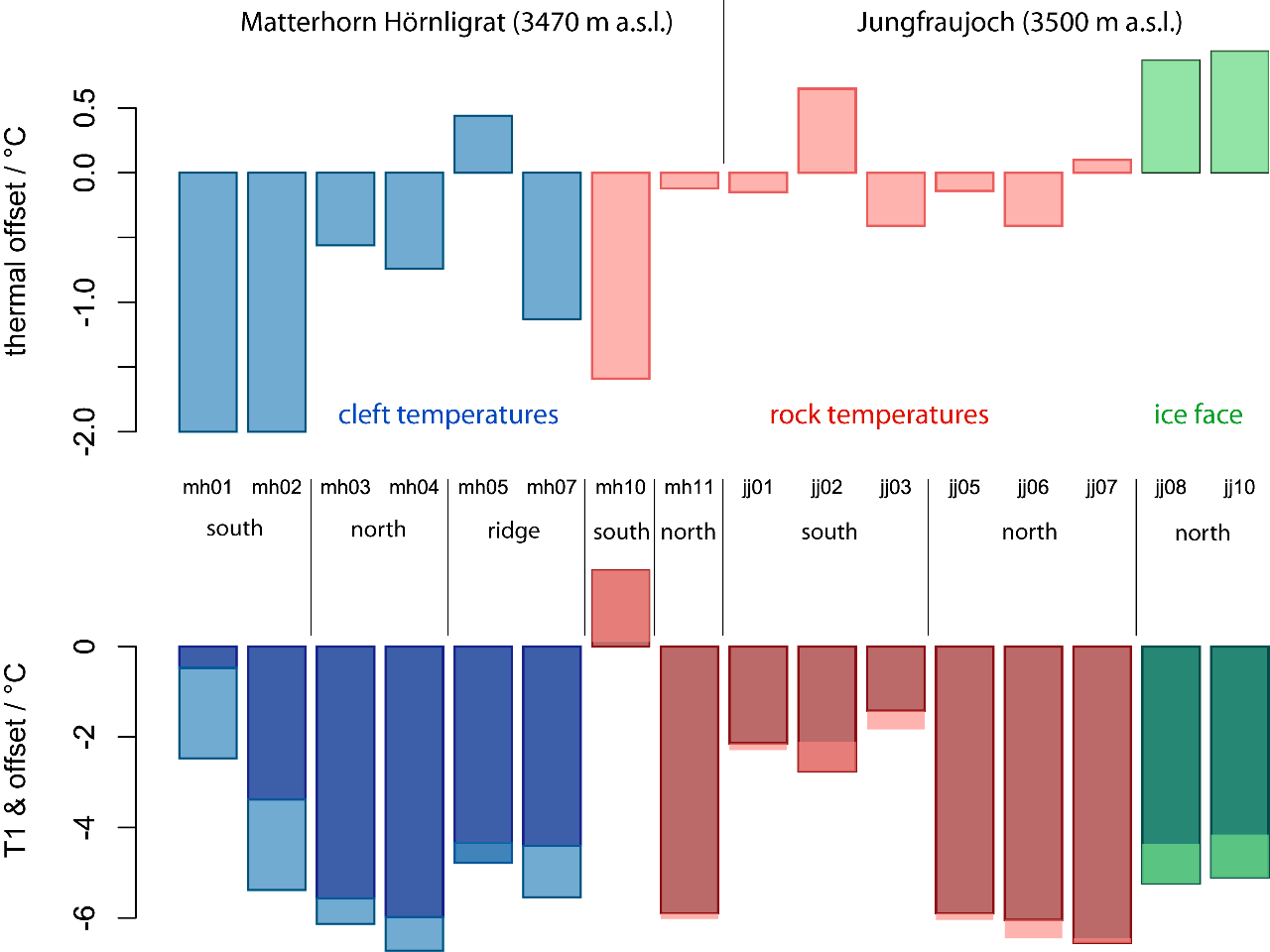Navigation auf uzh.ch
Navigation auf uzh.ch
The understanding of the thermal conditions of steep high-alpine rock faces is essential for the understanding of permafrost distribution and climate-dependent rock fall activity (see cleft dilatation). Because of a large hetrogenety of the surface conditions (snow retention) and discontinuities (e.g., fractures) of the bedrock, a extrapolation from a surface temperature measurement alone to the (underlying) permafrost temperature is subject to large uncertainty.
Due to a lack of empirical data from high-alpine faces, so far only conceptual considerations about the relation between surface temperature and temperature at depth exist. The data gathered by the PermaSense deployments provides first insight to the so called 'thermal offsets' i.e., the difference between the mean annual rock surface temperature and mean annual temperatures at depth. This is achieved with sensor rods that measure near-surface temperature profiles in bedrock and thermistor chains that measure temperatures within rock clefts or the firn and ice cover of steep rock faces.
